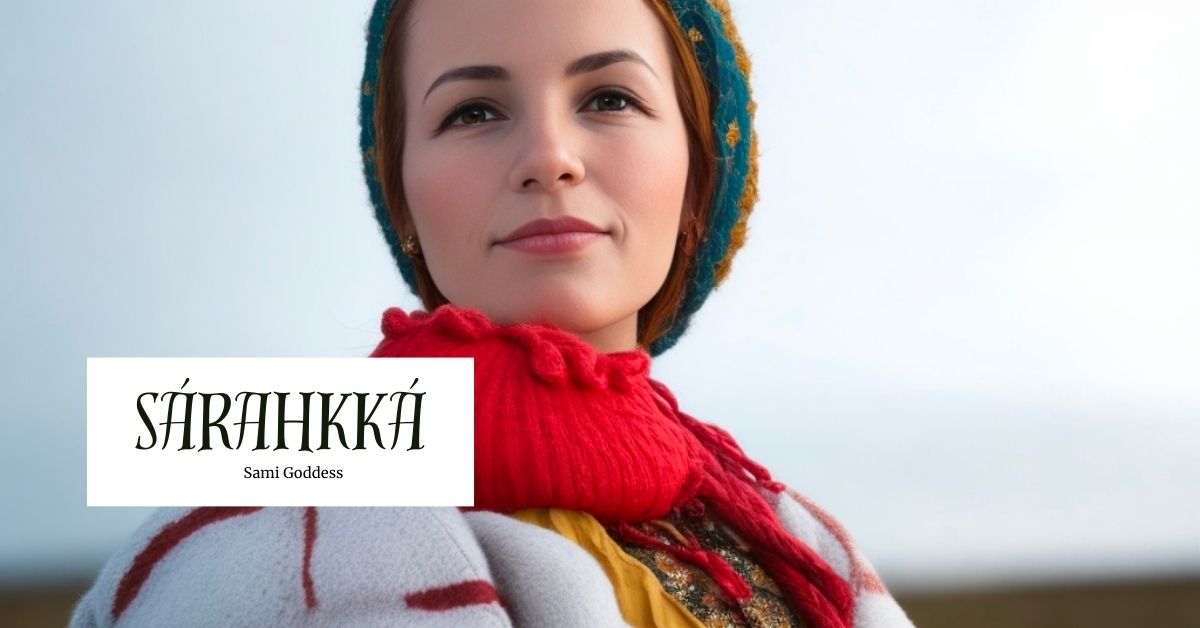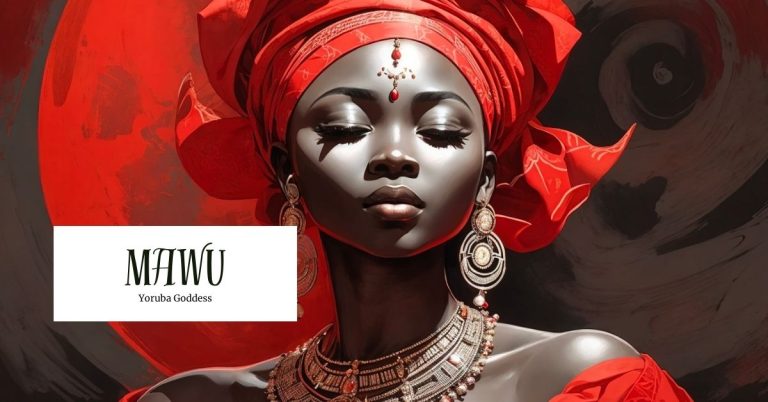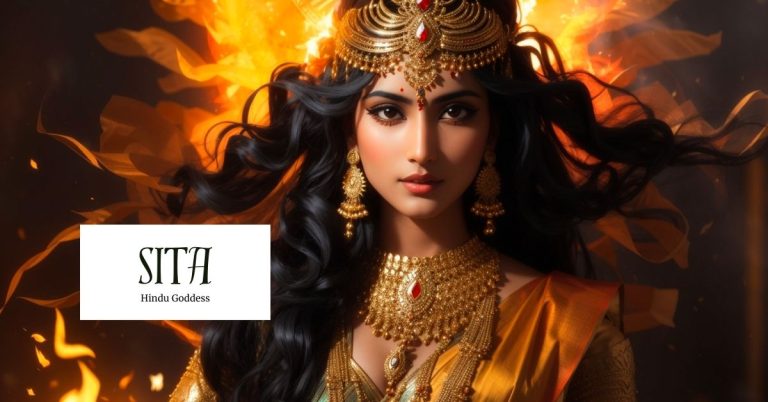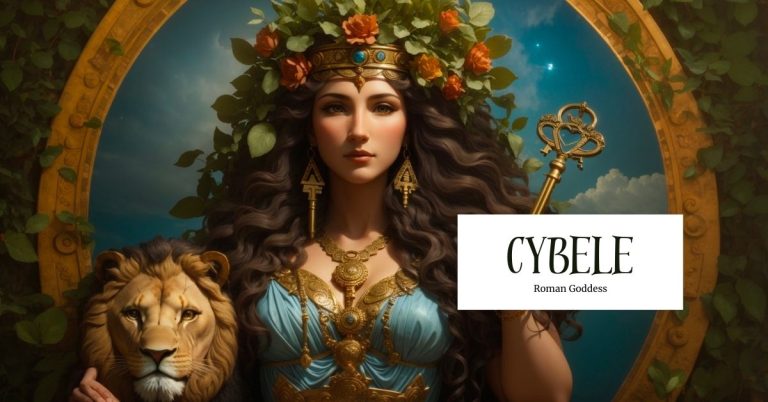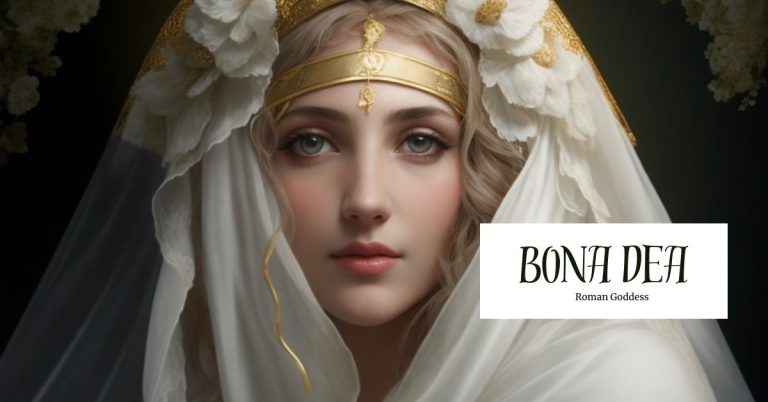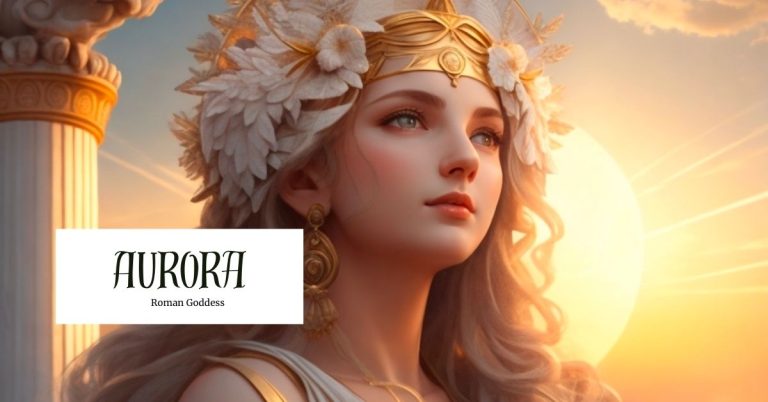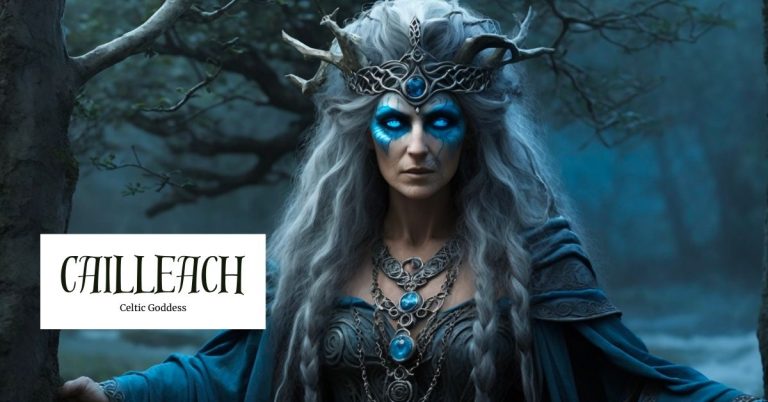Sárahkká: The Protector of Mothers
Sarahkka is a Sami deity that is especially important to the Sami women, for she is the protector of mothers and goddess of motherhood. Her presence helped comfort women during childbirth and provide reassurance. Sárahkká watches over baby girls from the moment they are born and as they develop into womanhood and until the moment they pass.
Overview of Sarahkka
Sárahkká is the daughter of Máttaráhkka, The Mother and the Beginner of Life, and sister of Juksakka and Uksakka. The mother and daughters worked together for the creation, development and protection of Sami children. Sárahkká is the middle sister and can be seen represented in the middle of a Sami drum. Opposite of her sister Juksáhkka, Sárahkká is the protector of girls and women from the moment of birth until their death. Sarahkka is a big source of relief and reliance for Sami women during pregnancy and childbirth, especially as the protector of mothers. Sárahkká is tuned into the feminine side of Sami culture and is associated with the girls and women in Sami society.

Source: Cabinet
Titles
Sárahkká’s titles include goddess of birth, goddess of motherhood, goddess of girls and women, and protector of mothers. The spelling iterations of her name are Sar-Akka, Sarakka, and Sarahakka.
Abilities
Some sources say that one of Sarahakka’s important jobs was to grow the flesh around the babies in her womb before putting them in the womb of Sami women so they can become pregnant. She would mold an unborn baby’s body around a soul from her mother. During birth, Sarahakka would be present to calm the mothers and watch over the new child being born. If the parents of the unborn child wanted a baby girl, they would hang the feathers of Sarahakka’s sacred bird on the komsio, the baby’s cradle. Sarahakka’s sister, Juksáhkka, was said to be the one to decide the baby’s sex, but Sarahakka could help influence her sister.

Source: Bukowskis
Traits
In Sami shamanism, the generalized female spirit is called akka. Máttaráhkká is thought of as the first akka. Women and girls belong to here and her akka spirit, and boys do as well until they reach the point of manhood. Worshiping akka is common practice in forms of rituals, prayers and sacrifices. Sarahakka and her sisters are also akkas. Juksakka is the goddess of boys and men and goddess of hunting and Uksakka is protector of children. All sisters have “akka” following their names. Sarahakka and her mother and sisters live under the earth under the tents (Kota) of women and children.

Source: GodChecker
History of Sami mythology
In the 1970s, the Sami feminist movement began to open discussion for women’s roles in society and to redefine their roles as they once were when the deities were a major part of Sami culture. The arrival of modern society and Christianity made the Sami women lose their power in Sami society. The movement began with women reindeer herders wanting the same rights and respect as the male reindeer herders. Not all Sami women were on board with the idea of feminism because they thought it made women the victims.
The Sami women’s organization founded in 1988 is named The Sarahkka in the goddess’ honor. The organization focuses on women’s issues in Sami culture and specifically focuses on Sami women as caretakers and passing on culture to their children. This group also focuses on Sami being an indigenous population.
Sami, also spelt Saami, is the population of people who inhabit the region of Sapmi, which is comprised of Norway, Sweden, Finland and Russia. Sami is its own language and is part of the Uralic language linguistic group. Other languages in this group include Finnish and Hungarian. The Sami people are descendants of nomadic communities who lived in northern Scandinavia for thousands of years. Reindeer herding, sheep herding, fishing and fur trapping are a few livelihoods the Sami are known for.
Traditional Sami religion and spiritual practices are considered to be animism—the belief that all naturalistic objects possess a soul. Examples can include rocks, plants, animals, and anything in the natural world. The Sami religion and beliefs can vary slightly from region to region, but the main deities of the Sami culture remain mostly the name, even though some may have different names for the same deity.

Source: ThorNews
Unfortunately, very little of Sami religion and mythology has been translated into English. In the 1800s, a Luther pastor named Levi Laestadius collected some fragments of this mythology, but it was poorly translated and weak explanations for lost historical resources. The Kalevala is a written book that focused on Finnish mythology, but also spoke of deities that were similar to the ones in Sami culture.
Influences of other religions/cultures
The presence of Christainty in Sami culture was active during the Roman Catholic middle ages, but the 17th century is when Norway and Sweden colonized Sami and Christianity was a main focus. In the kingdom of Denmark-Norway, the practicing of Sami religion resulted in a death penalty, for it was thought of as witchcraft. A Chrisitan mission was enacted in the 17th century to convert the Sami people to Christianity. During this period, the Sami people practiced Christianity in public, but in private, still continued their Sami religion.
Before Christinaity, women in Sami culture had higher regards in society because they were seen as the primary caregiver of the family and the one responsible for the family’s survival. Sarahakka and the many other female deities contributed to the idea that Sami women were well-respected in society and were mainly equal to men. However, once the ideas of Christianity reached the Sami people, this ideology changed.
Modern appearances
Sarahakka has a more prominent modern day appearance compared to her mother and sisters. The Sami women’s organization mentioned earlier founded in 1988 was named in Sarahakka’s honor.
In the Thor comics, Sarahakka and her sisters make minor appearances, otherwise, the modern appearance of Sarahakka is limited. If you have more information or legends that you can share, please do reach out!
Final thoughts
Sarahakka can be seen as a prominent feminist idol in Sami culture because of her dedication to girls and women and the comfort and support she provided during childbirth, but womanhood as well. Sarahakka was a way for the Sami women to find support during hard times and rejoice and connect with their sense of femininity and womanhood, especially way back then. This goddess and her family provided a strong sense of connection and security during the scariness of pregnancy and childbirth and allowed for the Sami people to celebrate life and death.
Sources
University of Texas- Women in Saami Society

